Teaching Methods And Tools
Parallel Session
6th Shaw-IAU Workshop on Astronomy for Education
Session timeblocks
Tuesday Nov. 12, 2024
Part 1:
UTC: 5:30 p.m. -
7 p.m.
America/New_York:
12:30 p.m.-
2 p.m.
Wednesday Nov. 13, 2024
Part 2:
UTC: 3 p.m. -
4:30 p.m.
America/New_York:
10 a.m.-
11:30 a.m.
Thursday Nov. 14, 2024
Part 1, repeated:
UTC: 10:30 a.m. -
noon
America/New_York:
5:30 a.m.-
7 a.m.
Friday Nov. 15, 2024
Part 2, repeated:
UTC: 8 a.m. -
9:30 a.m.
America/New_York:
3 a.m.-
4:30 a.m.
This session will focus on the many innovative ways astronomy is being taught, with practical tips on how to implement them.
Schedule
-
The Mediterranean co-design: the Sabir project. Towards co-designed IBL activities for high school
Tuesday Nov. 12, 2024
UTC: 5:30 p.m. - 5:40 p.m. America/New_York: 12:30 p.m.- 12:40 p.m.Thursday Nov. 14, 2024
UTC: 10:30 a.m. - 10:40 a.m. America/New_York: 5:30 a.m.- 5:40 a.m.The SABIR project is a co-design initiative fostering the network of NAECs in the Mediterranean. It was held both online (Mar-July 2024) and in person during a one-week residency in Milan. NAECs from Lebanon, Morocco, Spain and Turkey were invited. We discussed the framework and meaning of an Inquiry Based Learning (IBL) approach during the kick-off meeting. Each NAEC then selected some 'standard' activities to be rethought as IBL ones. The project included three cycles of discussion, offline implementation according to the suggestion of the group, and presentation of improved activities. The final versions of the activities were eventually co-designed together during the residency. In this presentation, we will illustrate the challenges, difficulties, and opportunities of this approach.
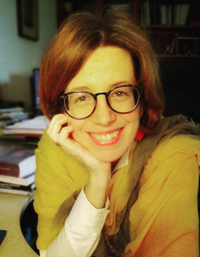
Dunja Fabjan (University of Ljubljana)
Coauthors: Stefano Sandrelli (INAF, OAE center Italy), Gloria Tirabassi (INAF, OAE center Italy), Nayra Rodríguez Eugenio (Instituto de Astrofísica de Canarias), Alejandra Goded Merino (Instituto de Astrofísica de Canarias), Aysegul Yelkenci (Istanbul Kultur University), Jean-Pierre Saghbini (President of the Association UniversCiel), Hassane Darhmaoui (Al Akhawayn University, Morocco)
For more information about this talk click here
-
Tips and Tools for Teaching Astrobiology
Tuesday Nov. 12, 2024
UTC: 5:40 p.m. - 5:55 p.m. America/New_York: 12:40 p.m.- 12:55 p.m.Thursday Nov. 14, 2024
UTC: 10:40 a.m. - 10:55 a.m. America/New_York: 5:40 a.m.- 5:55 a.m.The search for life beyond Earth is a compelling quest of modern science. Astrobiology appeals to a wide audience, including those who might not otherwise be engaged with science. It is just one subfield of astronomy but it has connections to geology, chemistry, biology, and even sociology. This interdisciplinary context creates both challenges and opportunities for educators. For non-science students, “Life in the Universe” is popular as a follow-up to an introductory astronomy course. Examples of teaching materials are given, with an emphasis on classroom demos, small group activities, and pedagogy that promotes engagement and active learning.
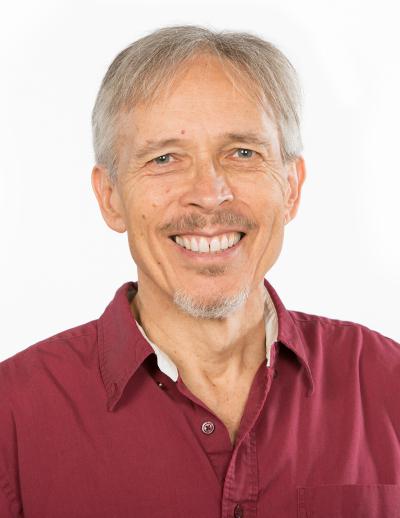
Chris Impey (University of Arizona)
For more information about this talk click here
-
Opening windows, revealing meanings: instrumental reading of scientific texts in English
Tuesday Nov. 12, 2024
UTC: 5:55 p.m. - 6:05 p.m. America/New_York: 12:55 p.m.- 1:05 p.m.Thursday Nov. 14, 2024
UTC: 10:55 a.m. - 11:05 a.m. America/New_York: 5:55 a.m.- 6:05 a.m.Astronomy, like all sciences, uses English as its language. While this is a challenge for native speakers of other languages, it also opens up the opportunity for an interest in astronomy to be used as a tool for teaching English. In this study, we explore the potential of the joined teaching English as a second language and science. The aim is to demonstrate that texts that seem inaccessible to students in a first contact can be understood by them through specific reading and interpretation techniques. We chose scientific texts about major discoveries, such as gravitational waves, because of the interest the students demonstrated in such subjects. Our results showed that reading scientific articles with high school students is a great way to teach English and promote scientific literacy.
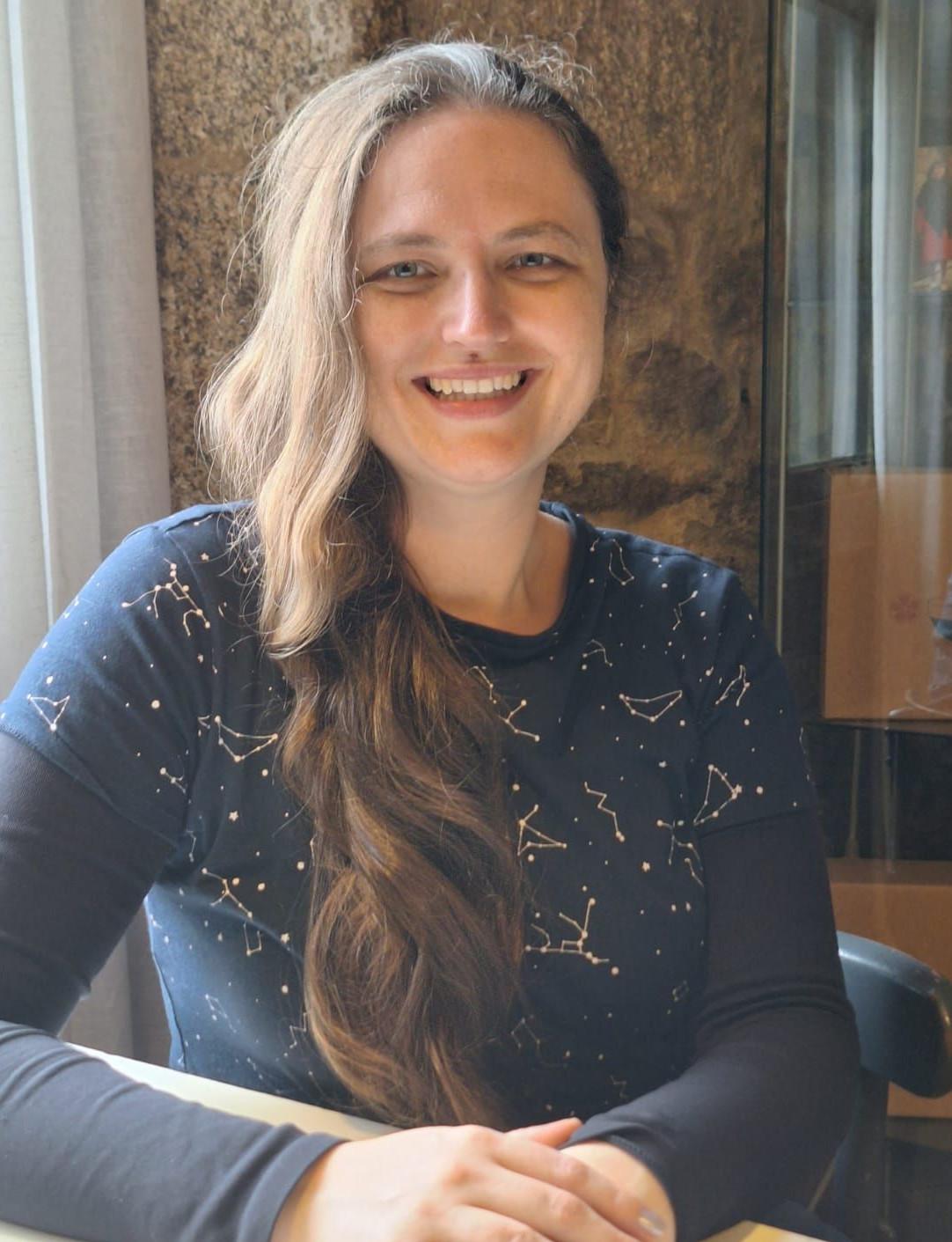
Ana Cecília Soja (Fluminense Federal Institute)
Coauthors: Priscila Célia Giacomassi (Federal Institute of Paraná)
For more information about this talk click here
-
Astronomy, Language, and Cultural Continuity: Nurturing Connection for Iranian Migrant Youth
Tuesday Nov. 12, 2024
UTC: 6:05 p.m. - 6:20 p.m. America/New_York: 1:05 p.m.- 1:20 p.m.Thursday Nov. 14, 2024
UTC: 11:05 a.m. - 11:20 a.m. America/New_York: 6:05 a.m.- 6:20 a.m.The migration of children and youths from underprivileged countries to advanced nations is a pressing issue. The Kargahe Setare Project aimed to promote astronomy among young Iranians through an online platform, reaching over 10,000 children. It then expanded to provide astronomy education for Iranian migrant children. A major challenge was the language barrier, as the project was initially in Persian. To address this, the project used astronomy to teach both scientific knowledge and the Persian language, integrating new worksheets, traditional Iranian drama, and storytelling. This approach underscores astronomy’s potential in language learning, helping migrant children stay connected to their cultural heritage.

Shahrzad Mirsoltani (Astronomy Educator and Director of Kargahe Setare Project)
For more information about this talk click here
-
Discussion Panel: Teaching Methods and Tools
Tuesday Nov. 12, 2024UTC: 6:20 p.m. - 7 p.m. America/New_York: 1:20 p.m.- 2 p.m.
Thursday Nov. 14, 2024
UTC: 11:20 a.m. - noon America/New_York: 6:20 a.m.- 7 a.m.Chair:
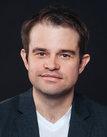
Niall Deacon
Panel: Dunja Fabjan
(University of Ljubljana), Chris Impey
(University of Arizona), Ana Cecília Soja
(Fluminense Federal Institute), Shahrzad Mirsoltani
(Astronomy Educator and Director of Kargahe Setare Project) -
In praise of raw data: sustainable printing techniques to engage students with astronomical images
Wednesday Nov. 13, 2024
UTC: 3 p.m. - 3:10 p.m. America/New_York: 10 a.m.- 10:10 a.m.Friday Nov. 15, 2024
UTC: 8 a.m. - 8:10 a.m. America/New_York: 3 a.m.- 3:10 a.m.Telescopes return almost daily images of celestial bodies that communicate science through colours, shapes and structures, contributing to our collective imagination of the Universe. The goal of this project is to bring back the “material” aspect of astronomical observations by exploring images from James Webb Space Telescope, discovering the richness of raw data, from artefacts like cosmic rays and bad pixels to the actual scientific information about planets, stars, galaxies. Images will be printed using sustainable analogue photographic techniques, acknowledging the importance of using materials wisely on a planet with limited resources. Two formats are being developed: an advanced printing workshop for art students, and a basic version for secondary schools.

Melanie King (Canterbury Christ Church University / Royal College of Art)

Claudia Mignone (INAF)
For more information about this talk click here
-
Engaging Students in Astronomy Through Learner-Driven Questions
Wednesday Nov. 13, 2024
UTC: 3:10 p.m. - 3:20 p.m. America/New_York: 10:10 a.m.- 10:20 a.m.Friday Nov. 15, 2024
UTC: 8:10 a.m. - 8:20 a.m. America/New_York: 3:10 a.m.- 3:20 a.m.Centering education around learner-driven questions empowers students and deepens their understanding of astronomy. By focusing on what students are curious about, educators can foster a sense of ownership in their learning, leading to greater engagement and independent exploration. In this presentation, I will share strategies from "Found in Space: A Science Podcast for Kids and Teens," which uses listener questions to spark curiosity and ownership in their learning. Participants will gain practical tips on integrating learner-driven questions into their teaching, creating a dynamic and engaging astronomy education experience.

Arwen Hubbard
For more information about this talk click here
-
Engaging preK - 2nd Grade Students Using Storybook Style Lessons to "See What's Out There!"
Wednesday Nov. 13, 2024
UTC: 3:20 p.m. - 3:35 p.m. America/New_York: 10:20 a.m.- 10:35 a.m.Friday Nov. 15, 2024
UTC: 8:20 a.m. - 8:35 a.m. America/New_York: 3:20 a.m.- 3:35 a.m.For pre-K through 2nd grade students, distance and size are concepts that are often beyond their experience. Using something that all kids enjoy, having a book to share and read together, we introduce these concepts along with imagery and tactile objects to involve students in their own learning. Students explore the natural world around them, learning how the Sun gives light and heat to help things grow and live. This includes how the Sun is essential to the plants and animals that the Earth supports, and the ways the Sun and sky move water around to help things thrive. We designed our Storybook lesson to be presented using NOAA's Science on a Sphere at our venue. In this session, we will explore ways that it can be easily adapted to the classroom and available technology.
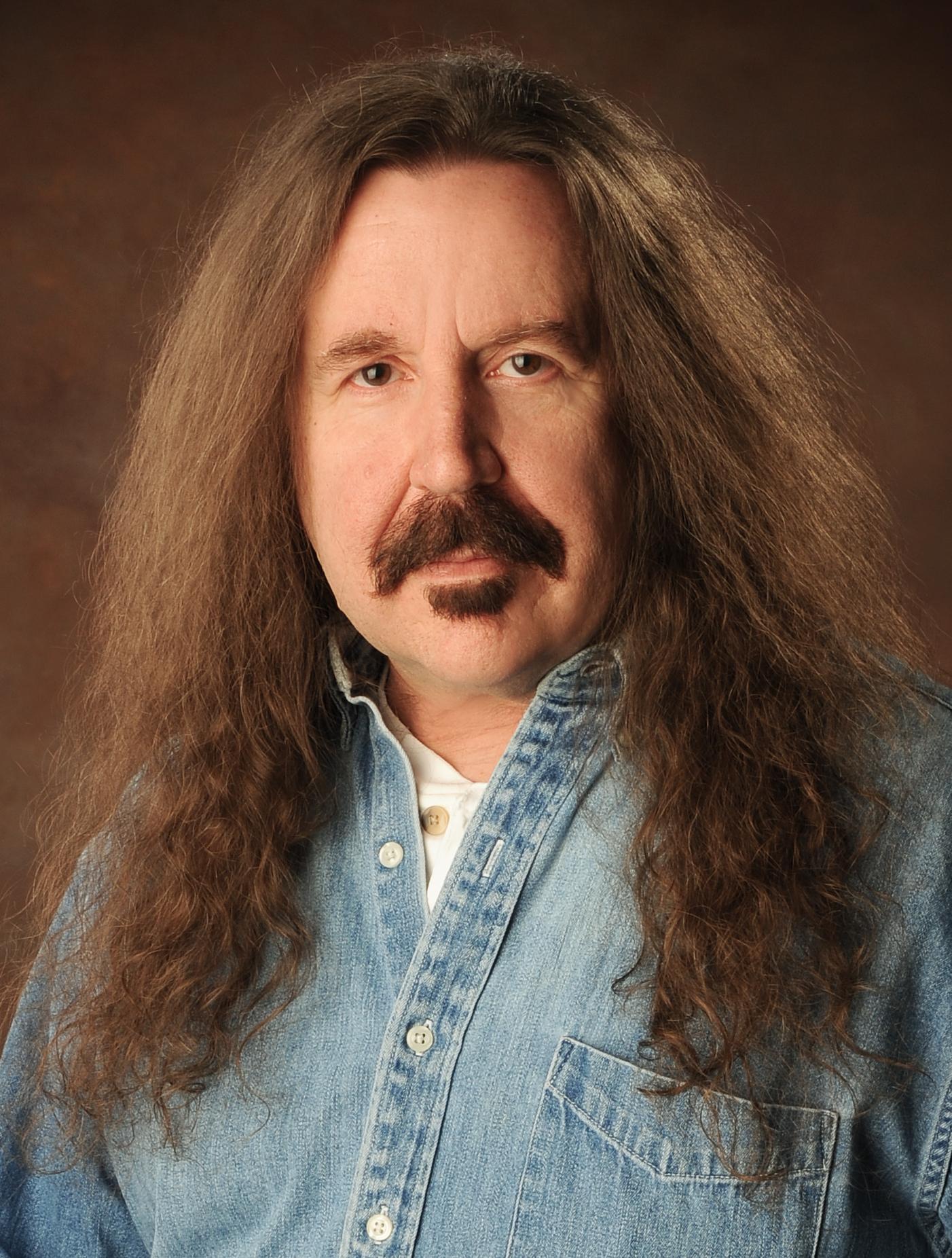
Paul Sirstins (Clark Planetarium)
Coauthors: Jason Trump (Clark Planetarium), Thomas Quayle (Clark Planetarium)
For more information about this talk click here
-
Discussion Panel: Teaching Methods and Tools
Wednesday Nov. 13, 2024UTC: 3:35 p.m. - 4:30 p.m. America/New_York: 10:35 a.m.- 11:30 a.m.
Friday Nov. 15, 2024
UTC: 8:35 a.m. - 9:30 a.m. America/New_York: 3:35 a.m.- 4:30 a.m.Chair:
Panel: Melanie King
(Canterbury Christ Church University / Royal College of Art), Claudia Mignone
(INAF), Arwen Hubbard , Paul Sirstins
(Clark Planetarium)
Posters
-
"We are all residents of the Milky way"
Nir Dubrovsky
Using a unique online platform with multilingual space lectures and space oriented PBL missions as a tool to bridge between alien sectors, a case test that I managed in Israel between Jewish and Arab students.
-
Advancing Astronomy Education through Dark Sky Initiative on Design Thinking and Social Innovation
Exodus Chun-Long Sit (Chair of IAU-NAEC & Co-NOC Hong Kong, Starrix, Hong Kong)
Despite light pollution poses significant challenges to observational astronomy, nocturnal animals, and energy consumption, it has rarely been discussed in formal education. This raises the question of how we can integrate dark sky education into science learning. This presentation highlights an interdisciplinary project "ASTROx", with student-led social innovation team, "The Starlight Squad," which focuses on dark-sky advocacy and science communication. By addressing real-life issues in the community, the project aims to raise awareness about urban light pollution. Students explored interdisciplinary methods and experiential activities, including outdoor classrooms, design thinking lessons, and hands-on experiences, to effectively communicate the importance of preserving our night skies.
-
Assessing Student Writing Assignments with Large Language Models
Matthew Wenger (The University of Arizona)
Writing assignments are useful for promoting and assessing student learning. It is difficult to implement student writing in large classes, and nearly impossible to provide iterative feedback. For large online classes, such as Massive Open Online Classes (MOOCs), the only solution has been to use peer graders. Unfortunately peer grading can be unreliable and peer graders do not always leave useful feedback. We used Large Language Models (LLMs) to test whether LLM's can accurately grade student writing assignments and provide feedback. Our results show that LLMs can provide accurate feedback similar to instructors. We also found that the grades assigned by LLMs were consistent with instructor scores, and more accurate than peer graders.
-
ASTRONOMICAL PERIPATETISM AND FLIPPED CLASSROOM: THE NEW HORIZON IN ASTRONOMY EDUCATION
José Antonio D'Santiago García (Universidad Nacional Experimental Rafael María Baralt)
In a hybrid world, we combine Astronomical Peripatetism and the Flipped Classroom to teach astronomy. Students acquire theoretical knowledge at home through videos and digital resources. During face-to-face sessions, we use the night sky as a blackboard to reinforce and apply this knowledge through live observations and interactive discussions. This approach promotes active and participatory learning, extending education beyond the physical classroom and fostering a personal connection with the universe. Our project integrates innovative pedagogical strategies and technological tools to make astronomy accessible and meaningful for a diverse audience.
-
Bridging gaps in Ghana's astronomy education for exceptional learners through innovative TTP
Forson Albert Kuntu (University of Mauritius / PRAGSAC)
Teaching astronomy to exceptional learners, especially those with disabilities or socioeconomic challenges, is challenging globally. In Ghana, there's a significant lack of organized astronomy education for these students, particularly in schools for the blind and deaf, due to the absence of accessible learning materials. To address this, the Teacher Training Program (TTP) was introduced, providing workshops for grade 7-9 science teachers. The program equips them with hands-on activities and innovative methodologies, leading to a significant increase in their skills. Feedback shows 83.3% of participants improved their astronomy knowledge, marking TTP as crucial for equity and inclusivity in Ghana's astronomy education.
-
Building Visualisations of Objects in Space from Ground Based Observations and Using Technology
Noorali Jiwaji (Marian University College and Open University of Tanzania)
The progress of science has relied on keen observers to notice changes that follow a some pattern that humans are tuned to want to explain. Observations of events in the sky form the basis of Astronomical knowledge. Hence building the correct mental pictures of how things happen out in space has been essential for progressing our understanding of our vast Universe. We describe the challenges faced by students to understand observations from the ground and how technology can assist in filling up observational gaps so as to build a complete picture these observations and explaining these by building a visual mental picture of how this happens in space. We use examples of daytime observations of the Sun and nighttime observations of planets to show the usefulness of this approach
-
Engaging the Public with Astronomy through Interactive Museum Experiences
Chen Ruoying
Shanghai Astronomy Museum, the world’s largest astronomy museum, offers a wide view of astronomical fields. However, complex topics like cosmology are hard to grasp through exhibitions alone. To address this, the “Star Navigation” program was launched as China’s first regular educational live-streaming event focused on museum exhibits. This monthly program, held within the museum, integrates exhibitions with current topics and features “star” scientists for thematic explanations. It has held 28 sessions, attracting 2.27 million views and 3,500 offline participants through live-streams. The program transforms exhibits into an engaging “online classroom,” enhancing public understanding of astronomy and has achieved tremendous success.
-
Enhancing Student Impact Through Innovative Astronomy Teaching Methodologies
Adriana Victoria Araujo Salcedo (Centro de Estudios en Astrofísica, Gimnasio Campestre)
Astronomy builds bridges between mathematics, physics, statistics, and nowadays data analysis. Astronomy allows us to create awareness of our environment, especially the physical-chemical reasons that allow life on Earth. Teaching astronomy as part of the vertical axis of the curriculum has been implemented since a few years ago at the GC school in Bogotá. Through the center of studies in Astrophysics and the Astronomical Observatory of the school, a subject called "Explora" has been developed, facing astronomy's basic concepts, history, and even exploration of topics in astrobiology, exoplanets, and planetary sciences. This talk will summarize the activities, the corresponding data on published articles in the area, and the number of students impacted by this methodology at the school.
-
Facilitating Celestial Navigations through Artistic Visualisation of Constellations using Artsterism
Nurul Syahirah Binti Nazarudin (International Association of Astronomical Artists (IAAA), Infant Jesus Convent Primary School)
For centuries, humanity has used creativity to visualize constellations, making art essential in celestial navigation. The Artsterism Kit facilitates learning by helping students recognize "asterisms" through artistic visualization. This kit includes a star map base, seasonal star map, brass fastener, and compass, which students draw on, label, and assemble before guided observation. Research with Year 6 pupils from Infant Jesus Convent Primary School showed they enjoyed and engaged in learning about constellations. Pre-test and post-test results indicated significant improvement in celestial navigation knowledge. The Artsterism Kit, a STEAM-integrated tool, enhances interest in astronomy and science through creativity, demonstrating the value of a multidisciplinary teaching approach.
-
From Real-Life Astronomy Research Questions to Olympiad Problems
Catalina-Ana Miritescu (IFAE, Barcelona)
Data analysis tasks are part of the Astronomy Olympiad in Romania. I created three problems based on real-life research projects. One problem presents noise sources characterization in gravitational wave detectors while it also assesses students’ ability to comfortably use a logarithmic scale and to perform a linear fit. One exercise uses real spectra of galaxies in the COSMOS field for Doppler shift and spectral line calculations. Data from the citizen science website Zooniverse.org is used in the third problem, presenting this novel way of research while testing pupils’ knowledge about error propagation and exoplanets. Although the short-term goal is to select the best competitors, the long-term aim is to teach all participants about current topics and methodologies in Astronomy research
-
From the Deep of Ages to the Universe with the AYAS Course
Avetik Grigoryan (Co-founder & President of AYAS Aerospace Society, Co-founder & CEO of Bazoomq Space Research Lab)
The talk will present the AYAS course developed and conducted by the author for 35 years for secondary and high school students of Armenia covering four main domains: aeronautics, aviation, astronomy, and astronautics. It will highlight the know-how of that course – 7 methodological principles that make it extremely efficient. The results of conducting the course will also be described, including its graduates' achievements and their activities in scientific and technological domains up to the launch of Armenia’s first domestic satellite "Hayasat" in 2023.
-
Further Adventures with GWAM (Gee Whizz Astronomy Modelling)
Fraser Lewis (Faulkes Telescope Project, GWAM)
I’ll provide an update on a successful year for Gee-Whiz Astronomy Modelling (GWAM), an online astronomy ‘club’ giving our students, teachers and educators opportunities in astronomical research. GWAM was founded during the pandemic by Carl Pennypacker (UC Berkeley, GHOU) and Elizabeth Villanueva (University of Chile) developing open-ended astronomy projects for students. Our team live in Chile, Pakistan, the United States, Colombia and Wales and meet online for an hour each week at a time suitable to all (typically Fridays ~ 18 – 20 UT). Students collect and analyse astronomical images and datasets (such as Gaia DR3), use astronomical software and Python and also use observing time from Las Cumbres Observatory. Students study topics such as transiting exoplanets, eclipsing binaries, open clusters and blazars. Find out more at our website, https://sites.google.com/view/gwamcl
-
Journey Alongside the Centerline
Deborah Skapik (Friends' Central School/St. Joe's University)
This presentation will focus on teacher training in advance of the Great American Eclipse on April 8, 2024. I document my cross-country journey to prepare underserved communities along the eclipse path and how I followed up with them as they reflected on their incredible eclipse experiences. In fall 2022, I self-published an educator’s guide to solar eclipses. In summer 2023 I distributed Look UP, Below! free to educators in Title 1 schools (large concentrations of low-income students) alongside the centerline of the eclipse, providing science educators in these schools with a free resource and workshops encouraging them to get their students outside viewing the eclipse safely. I will share advice to those planning similar teacher training along eclipse paths in other countries.
-
Multisensory planetarium. The Universe as you never sensed it
Federico Di Giacomo (INAF - Istituto Nazionale di Astrofisica)
What if anyone could observe the night sky regardless of their physical abilities? This project means to offer a common perceptual and cognitive framework to all users, sighted, deaf and blind or visually impaired (BVI) alike. The planetarium consists of a plexiglass hemisphere on which stars up to the fourth magnitude are represented by metal bars that, when touched, activate visual, tactile and acoustic stimuli. The acoustic stimuli (used to represent magnitude) are intended to introduce a perceptive equivalent for BVI users, while the haptic ones introduce quantitative features (distance and magnitude) that can only be known through instrumental observations. The multisensory planetarium opens new perspectives for inclusive education, offering everyone the opportunity to explore the sky
-
Planetary Atmospheres: Astrometeorology Concepts in Non-formal Settings
Silva Varine Kennia Karina
Astronomy and meteorology are valuable interdisciplinary tools for enriching science education in informal settings, such as the Unesp Didactic Astronomy Observatory. Comparing the Earth's atmosphere with those of other planets in the solar system helps to understand complex concepts like planetary morphology and atmospheric dynamics, making them more accessible and engaging for diverse audiences starting from high school. Didactic lectures, images, animations, and astronomical observations are effective resources for illustrating these topics clearly and attractively. The use of data from scientific literature and connections with historical events also enhance learning. Astrometeorology can be a powerful tool in this context, promoting both theoretical and practical understanding.
-
Problems from recent research
Jasjeet Bagla (IISER Mohali)
Courses on astronomy and astrophysics introduce a large number of concepts to students. These concepts sometimes seem very disparate and unconnected. I have been experimenting with making problems from recent research papers by breaking these into small modules to illustrate how different aspects come together in practice. This also brings undergraduate students in direct contact with ongoing research. I will illustrate this point by showing a few examples from courses taught in last few years.
-
Satellite Radio Reception Experiment Using SDR as a Teaching Material for High School Physics
Hideki Uchiyama (Shizuoka University)
Some artificial satellites transmit radio waves that can be received using amateur radio equipment. Satellite radio reception experiments allow students to observe satellite movements and study high school-level physical phenomena. Kobayashi et al. (2020) showed that these experiments effectively motivate Japanese high school students to learn science. We propose using Software-Defined Radio (SDR) instead of analog receivers for the experiments. SDR enables direct visualization of frequency changes, allowing for the quantitative measurement of satellite velocity using the Doppler effect formula. It offers valuable material for studying Kepler's motion and the Doppler effect in high school physics. We conducted classes with SDR-based experiments and will report our findings.
-
Sustainable Methods for Teaching Astronomy: Educational Camera Obscura in Non-Formal Spaces
Mayana Vitória Oliveira e Sousa
This work adapts the construction of an educational camera obscura using recyclable, low-cost materials for a non-formal educational setting, such as the Observatório Didático de Astronomia at UNESP. This approach offers a practical way to demonstrate and complement optical concepts in astronomy education. The camera obscura allows students and visitors to understand the basic principle of the optical telescope and its relation to the functioning of the human eye. By observing image formation and principles like light refraction, interactive and deep learning can be promoted. This practical and accessible approach facilitates the observation of astronomical phenomena and stimulates discussions about optics and the history of scientific instruments.
-
Telegram to a planet: yours students communicate with aliens
Xusa Moya-Lucas (OAUV Astronomical Observatory University Valencia))
If you could communicate with aliens, what would you tell them? It is not a easy matter; is precisely what we want our students to do. “Telegram to a planet” is an educational contest from the cooperation between (OAUV, IEEC, CESAR, CAB, TV3) Is an interdisciplinary learning environment that, well equipped with a teaching toolbox provided by the OAUV, has rescued the topic of extraterrestrial life from the paranormal and brought it to the classroom desks as a scientific subject. More than one hundred schools enrolled in the contest during its first edition and the winner message was sent to Teegarden-b. The radio transmission was carried out by an ESA-INTA The feedback is that it is now a “must do” academic activity to start the course. Henceforth, it will be back every course
-
The knowledge that emerges from shadows
Alvaro Folhas (University of Coimbra; NUCLIO; CITEUC)
Interdisciplinary learning is crucial for the 21st century, promoting the construction of a meaningful and holistic view of the Universe. Astronomy, in addition to the interest it arouses, offers a unique platform to integrate Physics, Chemistry, Mathematics, Biology, Geography, ICT and Arts. By exploring the Cosmos, students develop a scientific and aesthetic understanding of the organization and mechanics of the Universe, but also gain awareness of the fragility of our existence on Earth. To operationalize this, I conducted a teacher training, focused on astronomy and shadow analysis and measurement activities for students. This experience reinforced Physics, Mathematics, Geography and Biology concepts, demonstrating how astronomy enables interdisciplinary learning in schools
-
Using Real Scientific Data in the Classroom to Teach Astronomy
Mohammed Akram Zermane (Laboratoire de Physique Theorique, Faculté des Sciences Exactes Université de Bejaia, 06000 Bejaia, Algérie Research Unit in Scientific Mediation, CERIST, Constantine 25016, Algeria)
This poster presents the integration of real scientific data into astronomy education, offering students a hands-on approach to learning. By accessing data from sources like NASA's Exoplanet Archive and ESA's Gaia mission, students can explore projects such as analyzing light curves or mapping constellations. Practical tips for classroom implementation and using tools like Python and Stellarium are provided. The poster also covers adapting activities for various education levels and diverse audiences, enhancing students' critical thinking, data literacy, and understanding of astronomical concepts. This approach bridges theory and practice, fostering deeper engagement with astronomy.
-
Young Scientific Explainers - A Museum perspective on designing astronomy educational program
Wu Xiaoxi (Shanghai Astronomy Museum)
Intending to shape well-rounded individuals through astronomy education, the annually hosted program “Young Scientific Explainers” at the Shanghai Astronomy Museum offers a distinctive scientific exploration experience. Students transform from learners into researchers by utilizing the resources and tools provided and progressive guidance from astronomers. They sharpen their presentation and communication skills with the help of museum educators. The program culminates in a student-curated exhibition, in which they manifest their findings creatively through posters, models, and direct communications with the public. With varying astronomical themes each year, the program has evolved and enhanced over the past three years, becoming an integral part of the summer offerings at the museum.




